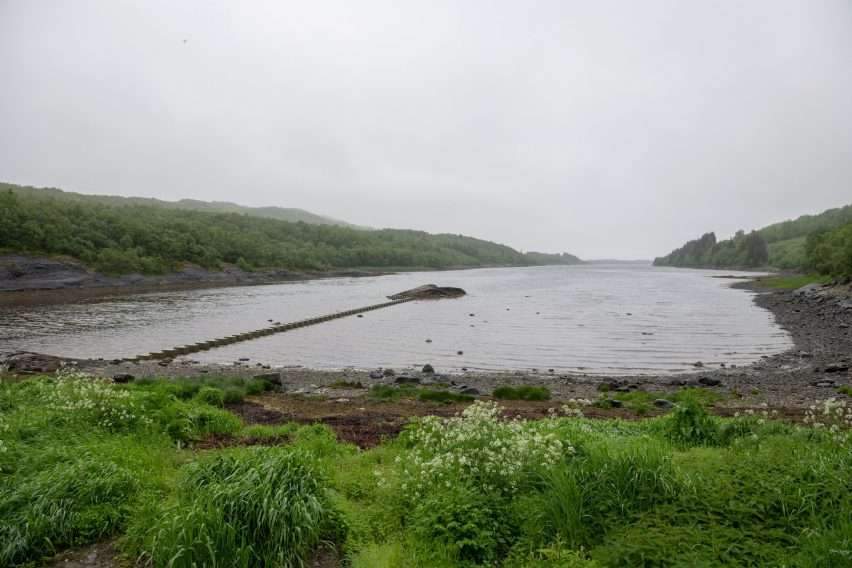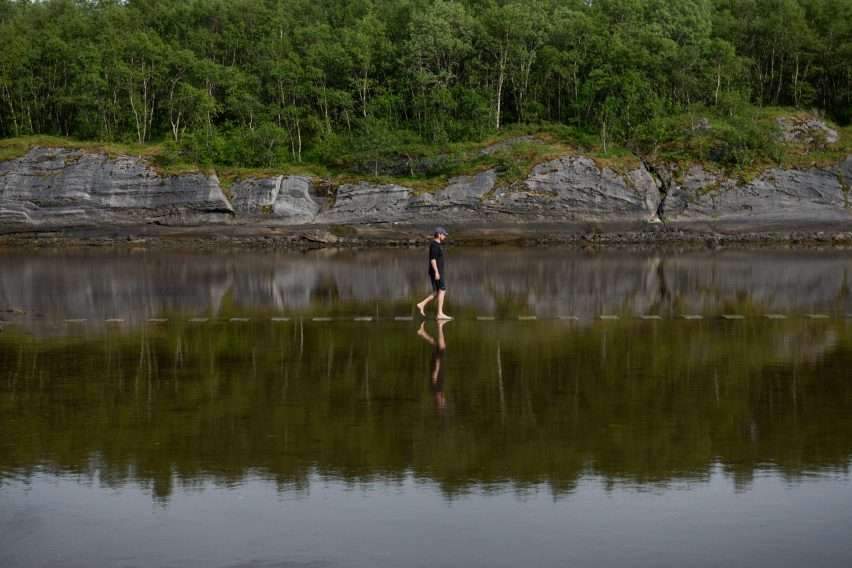Create a trail that disappears with the tide on the scenic Trailvikosen road
Create a trail that disappears with the tide on the scenic Trailvikosen road,
Architecture and design studio Snøhetta has installed a stone path off the coast of Norway that appears and disappears with the tide to illustrate the ‘pass of time’.

Design Features
A trail with views of Mount Torghatten in Helgeland, and the Trailvikosen Scenic Route’s tiered installation encourages travelers to slow down and observe nature.
Snøhetta’s design consists of 55 springboards, arranged in a row along the sandy sea floor,
so that visibility and accessibility change as the water rises and falls.
According to studio landscape architect Thea Kvami Hartmann,
“the main inspiration for the project is time” and how it can be experienced in nature.
The tide in nature represents the basic concept of time, and the constantly changing rhythm of nature itself.
Another example in the site of the time is the round stones that were formed by nature over time and placed on the sandy bottom.
They wanted to arouse the visitor’s awareness and curiosity, by placing square stones in alignment with round stones.
The Trailvikosen Scenic Route was commissioned by the Norwegian Public Roads Administration.
They form part of the Norwegian Tourist Routes, and also a series of experiences for road travelers.
Natural wonders are also amplified by art, design and architecture,
along the carefully selected roads in Norway.
Focusing also on the unique landscapes and characteristics of the different locations.

Design shape
The 55 stones used to create the Trailvikosen Scenic Route were the exact number needed to connect the beach to a small island,
allowing visitors to leap into solid ground on either end.
Each is also fully visible at low tide and completely submerged at high tide under the clear waters of the Norwegian Sea.
The steps are made of granite sourced from a local company, chosen because its appearance complements other rocks in the area.
Thus Snøhetta designed the 500mm wide square steps to make the path as narrow as possible while enabling two people to pass each other.
This also allowed the studio to create spaces between each board so that visitors could look down at the water while walking through it safely.
They wanted the distance to be enough so that you need to look down and focus when walking,
and make sure the focus shifts to what’s below and around you.
While they did a test jump with the biggest person in their studio,
to make sure everything was working as intended.
It is also hoped that the scenic Trailvikosen Trail will
“provoke new reflections on nature itself and how we take care of it for the future”.

Design goals
A similar concept was behind Snøhetta’s design for Under,
an underwater restaurant she created in Båly three years ago.
While creating a unique experience for visitors, it is also hoped to encourage them to learn about marine life by observing it up close.
The studio also recently released new images of the building,
now that it’s covered in marine life and functions as an artificial reef.
Other recent landscaping projects by Snøhetta include a weathered steel cantilevered platform.
For more architectural news







